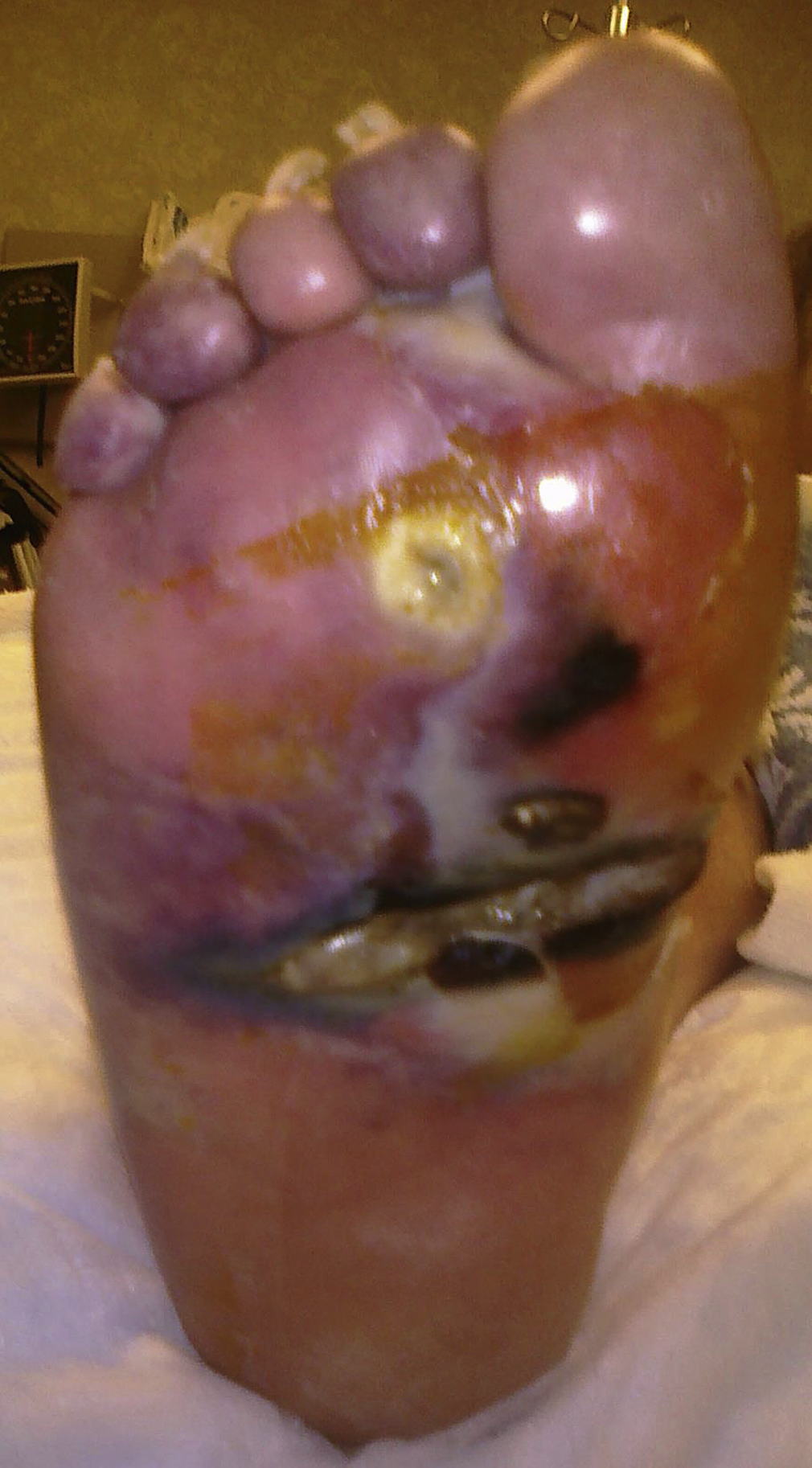gas gangrene, necrosis accompanied by gas bubbles in soft tissue after surgery or trauma. It is caused by anaerobic organisms, such as various species of Clostridium, particularly C. perfringens. Symptoms include pain, swelling, and tenderness of the wound area; moderate fever; tachycardia; and hypotension. The skin around the wound becomes necrotic and ruptures, revealing necrotic muscle. A characteristic finding is toxic delirium. Spontaneous gas gangrene is most often caused by the spread of C. septicum from the GI tract of colon cancer patients. Because of its aerotolerant nature, C. septicum can infect normal tissues. If untreated, gas gangrene is rapidly fatal. Prompt treatment, including excision of gangrenous tissue and IV administration of penicillin G, saves 80% of patients. The disease is prevented by proper wound care. Also called anaerobic myositis.

